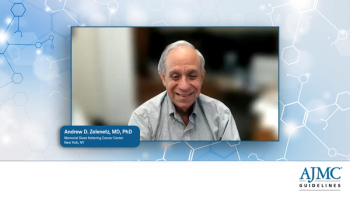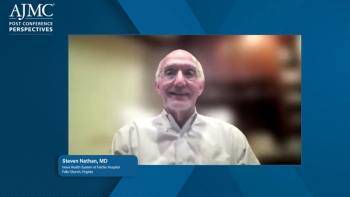
COPD Associated With Complications, Longer LOS After Lung Cancer Surgery
A retrospective study found that chronic obstructive pulmonary disease (COPD) was associated with postoperative pulmonary complications and longer length of stay (LOS) following lung cancer resection.
A study published in
The researchers conducted a retrospective review of a prospectively maintained database of consecutive operations performed for lung cancer resection. The data included demographic information, preoperative lung function, and postoperative complications.
All patients who had a lobectomy or pneumonectomy for lung cancer between 1995 and 2018 at a lung cancer center in Australia were included in the study. Patients who had a segmentectomy or wedge resection were excluded because their tumors were benign. Participants were split into 3 groups based on their smoking status: current smokers, ex-smokers, and never smokers.
The researchers compared pulmonary complications, overall complications, and length of stay among current smokers, ex-smokers, and never smokers; they also compared pulmonary complications in those with and without COPD.
A total of 1013 patients had a curative-intent lobectomy (89%) or pneumonectomy (11%). The mean (SD) age of the participants was 66 (12) years, and 61% were men.
Of the participants, 36% were ex-smokers, 31% were current smokers, and 11% never smoked. Participants without smoking status were excluded from the smoking status vs complications analysis. On average, ex-smokers were older than never smokers (69 vs 63 years). Current and ex-smokers were also more likely to be men.
Preoperative spirometric values were higher in never smokers compared with current and ex-smokers, with mean percentage predicted forced expiratory volume in 1 second (FEV1s) values of 94%, 81%, and 84%. Spirometry and carbon monoxide transfer factor values had a similar pattern, with mean percentage values of 83% in never smokers, compared with 70% in current and 73% in ex-smokers. A preoperative diagnosis of COPD was in 20% of never smokers, 57% of current smokers, and 57% of ex-smokers.
Of the participants, 82% had a pathological diagnosis of non–small cell lung cancer (NSCLC), of which 51% were adenocarcinoma and 28% were squamous cell carcinoma. NSCLC was more common in current smokers (85% vs 63%; odds ratio [OR], 3.25; 95% CI, 1.98-5.31) and ex-smokers (87% vs 63%; OR, 4.02; 95% CI, 2.79-12.6) compared with never smokers.
Carcinoid tumors were less likely in current smokers (3% vs 28%; OR, 0.07; 95% CI, 0.03-0.15) and ex-smokers (4% vs 28%; OR, 0.10; 95% CI, 0.05-0.20) than in never smokers.
Never smokers were more likely to have a diagnosis of stage I disease compared with ex-smokers (68% vs 55%) and current smokers (68% vs 52%). Current smokers were more likely to have stage II disease compared with never smokers (29% vs 19%). There was also a higher rate of stage III disease in current and ex-smokers compared with never smokers.
There were 26% of patients who experienced a PPC, and 71 patients experienced more than a single PPC. There was no difference in complication rates according to smoking status. PPCs were more frequent in current smokers compared with never smokers (27% vs 17%) but there was no significant difference between current and ex-smokers or between never and ex-smokers.
Participants with a diagnosis of COPD had a higher frequency of PPCs (65% vs 35%; adjusted OR [AOR], 1.76; 95% CI, 1.02-2.41) and overall complications (60% vs 40%; AOR, 1.53; 95% CI, 1.17-2.01). Of the pulmonary complications, sputum retention, respiratory failure, and air leak were more common in patients with COPD. Mean length of stay was also longer in those with COPD (10.3 vs 9.0 days). Sputum retention was more common in current smokers compared with ex-smokers with COPD (AOR, 10.9; 95% CI, 1.58-74.9).
There were some limitations to this study. The researchers were unable to assess the effect of a shorter period of smoking cessation on complication rates, as the current smoker definition included patients who had smoked within the past year. The researchers also used prebronchodilator spirometry to define COPD, which may have overestimated the number of patients with COPD. The researchers did not have data on pre-existing comorbidities.
The researchers concluded that smoking and COPD are associated with a higher rate of PPCs after a lung cancer resection.
“An emphasis on COPD treatment optimization, rather than smoking cessation in isolation, may maximize post-operative outcomes,” the authors wrote.
Reference
Jeganathan V, Knight S, Bricknell M, et al. Impact of smoking status and chronic obstructive pulmonary disease on pulmonary complications post lung cancer surgery. PLoS One. Published online March 29, 2022. doi:10.1371/journal.pone.0266052
Newsletter
Stay ahead of policy, cost, and value—subscribe to AJMC for expert insights at the intersection of clinical care and health economics.










































